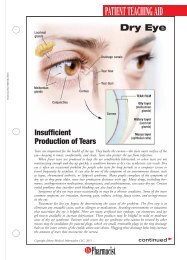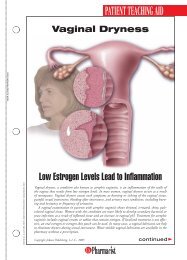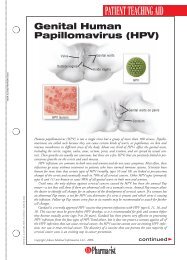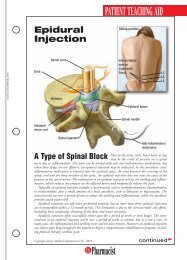FENTANYL TRANSDERMAL SYSTEMBRIEF SUMMARY: Please see package insert for full prescribing information.FOR USE IN OPIOID-TOLERANT PATIENTS ONLYFentanyl transdermal system contains a high concentration of a potent Schedule II opioid agonist, fentanyl.Schedule II opioid substances which include fentanyl, hydromorphone, methadone, morphine, oxycodone, andoxymorphone have the highest potential for abuse and associated risk of fatal overdose due to respiratorydepression. Fentanyl can be abused and is subject to criminal diversion. The high content of fentanyl in thepatches (fentanyl transdermal system) may be a particular target for abuse and diversion.Fentanyl transdermal system is indicated for management of persistent, moderate to severe chronic pain that:• requires continuous, around-the-clock opioid administration for an extended period of time, and• cannot be managed by other means such as non-steroidal analgesics, opioid combination products, orimmediate-release opioidsFentanyl transdermal system should ONLY be used in patients who are already receiving opioid therapy, whohave demonstrated opioid tolerance, and who require a total daily dose at least equivalent to fentanyl transdermalsystem 25 mcg/hr. Patients who are considered opioid-tolerant are those who have been taking, for aweek or longer, at least 60 mg of morphine daily, or at least 30 mg of oral oxycodone daily, or at least 8 mg oforal hydromorphone daily or an equianalgesic dose of another opioid.Because serious or life-threatening hypoventilation could occur, fentanyl transdermal system is contraindicated:• in patients who are not opioid-tolerant• in the management of acute pain or in patients who require opioid analgesia for a short period of time• in the management of postoperative pain, including use after out patient or day surgeries (e.g., tonsillectomies)• in the management of mild pain• in the management of intermittent pain [e.g., use on an as needed basis (prn)](See CONTRAINDICATIONS for further information.)Since the peak fentanyl levels occur between 24 and 72 hours of treatment, prescribers should be aware thatserious or life-threatening hypoventilation may occur, even in opioid-tolerant patients, during the initial applicationperiod.The concomitant use of fentanyl transdermal system with all cytochrome P450 3A4 inhibitors (such asritonavir, ketoconazole, itraconazole, troleandomycin, clarithromycin, nelfinavir, nefazodone, amiodarone,amprenavir, aprepitant, diltiazem, erythromycin, fluconazole, fosamprenavir, grapefruit juice, and verapamil)may result in an increase in fentanyl plasma concentrations, which could increase or prolong adverse drugeffects and may cause potentially fatal respiratory depression. Patients receiving fentanyl transdermalsystem and any CYP3A4 inhibitor should be carefully monitored for an extended period of time and dosageadjustments should be made if warranted (see CLINICAL PHARMACOLOGY: Drug Interactions, WARNINGS,PRECAUTIONS and DOSAGE AND ADMINISTRATION in full prescribing information for further information). Thesafety of fentanyl transdermal system has not been established in children under 2 years of age. Fentanyltransdermal system should be administered to children only if they are opioid-tolerant and 2 years of age orolder (see PRECAUTIONS: Pediatric Use in full prescribing information).Fentanyl transdermal system is ONLY for use in patients who are already tolerant to opioid therapy of comparablepotency. Use in non-opioid-tolerant patients may lead to fatal respiratory depression. Overestimating thefentanyl transdermal system dose when converting patients from another opioid medication can result in fataloverdose with the first dose. Due to the mean elimination half-life of 17 hours of fentanyl transdermal system,patients who are thought to have had a serious adverse event, including overdose, will require monitoring andtreatment for at least 24 hours.Fentanyl transdermal system can be abused in a manner similar to other opioid agonists, legal or illicit. Thisrisk should be considered when administering, prescribing, or dispensing fentanyl transdermal system insituations where the healthcare professional is concerned about increased risk of misuse, abuse or diversion.Persons at increased risk for opioid abuse include those with a personal or family history of substance abuse(including drug or alcohol abuse or addiction) or mental illness (e.g., major depression). Patients should beassessed for their clinical risks for opioid abuse or addiction prior to being prescribed opioids. All patientsreceiving opioids should be routinely monitored for signs of misuse, abuse and addiction. Patients atincreased risk of opioid abuse may still be appropriately treated with modified-release opioid formulations;however, these patients will require intensive monitoring for signs of misuse, abuse, or addiction.Fentanyl transdermal system patches are intended for transdermal use (on intact skin) only. Do not use afentanyl transdermal system if the seal is broken or the patch is cut, damaged, or changed in any way.Avoid exposing the fentanyl transdermal system application site and surrounding area to direct external heatsources, such as heating pads or electric blankets, heat or tanning lamps, saunas, hot tubs, and heated waterbeds, while wearing the system. Avoid taking hot baths or sunbathing. There is a potential for temperaturedependentincreases in fentanyl released from the system resulting in possible overdose and death. Patientswearing fentanyl transdermal systems who develop fever or increased core body temperature due tostrenuous exertion should be monitored for opioid side effects and the fentanyl transdermal system doseshould be adjusted if necessary.INDICATIONS AND USAGE: Fentanyl transdermal system is indicated for management of persistent, moderate to severechronic pain that:• requires continuous, around-the-clock opioid administration for an extended period of time, and• cannot be managed by other means such as non-steroidal analgesics, opioid combination products, orimmediate-release opioidsFentanyl transdermal system should ONLY be used in patients who are already receiving opioid therapy, who havedemonstrated opioid tolerance, and who require a total daily dose at least equivalent to fentanyl transdermal system25 mcg/hr (see DOSAGE AND ADMINISTRATION in full prescribing information). Patients who are consideredopioid-tolerant are those who have been taking, for a week or longer, at least 60 mg of morphine daily, or at least30 mg of oral oxycodone daily, or at least 8 mg of oral hydromorphone daily, or an equianalgesic dose of another opioid.Because serious or life-threatening hypoventilation could result, fentanyl transdermal system is contraindicatedfor use on an as needed basis (i.e., prn), for the management of postoperative or acute pain, or in patients who are notopioid-tolerant or who require opioid analgesia for a short period of time (see BOX WARNING and CONTRAINDICATIONS).An evaluation of the appropriateness and adequacy of treating with immediate-release opioids is advisable priorto initiating therapy with any modified-release opioid. Prescribers should individualize treatment in every case,initiating therapy at the appropriate point along a progression from non-opioid analgesics, such as non-steroidalanti-inflammatory drugs and acetaminophen, to opioids, in a plan of pain management such as outlined by the WorldHealth Organization, the Agency for Health Research and Quality, the Federation of State Medical Boards Model Policy,or the American Pain Society.Patients should be assessed for their clinical risks for opioid abuse or addiction prior to being prescribed opioids.Patients receiving opioids should be routinely monitored for signs of misuse, abuse, and addiction. Persons atincreased risk for opioid abuse include those with a personal or family history of substance abuse (including drug oralcohol abuse or addiction) or mental illness (e.g., major depression). Patients at increased risk may still beappropriately treated with modified-release opioid formulations; however these patients will require intensivemonitoring for signs of misuse, abuse, or addiction.CONTRAINDICATIONS: Because serious or life-threatening hypoventilation could occur, fentanyl transdermalsystem is contraindicated:• in patients who are not opioid-tolerant• in the management of acute pain or in patients who require opioid analgesia for a short period of time• in the management of postoperative pain, including use after out-patient or day surgeries (e.g., tonsillectomies)• in the management of mild pain• in the management of intermittent pain [e.g., use on an as needed basis (prn)]• in situations of significant respiratory depression, especially in unmonitored settings where there is a lackof resuscitative equipment• in patients who have acute or severe bronchial asthmaFentanyl transdermal system is contraindicated in patients who have or are suspected of having paralytic ileus.Fentanyl transdermal system is contraindicated in patients with known hypersensitivity to fentanyl or anycomponents of this product.WARNINGS:Fentanyl transdermal systems are intended for transdermal use (on intact skin) only. Do not use a fentanyltransdermal system if the seal is broken or the patch is cut, damaged, or changed in any way.The safety of fentanyl transdermal system has not been established in children under 2 years of age. Fentanyltransdermal system should be administered to children only if they are opioid-tolerant and 2 years of age or older(see PRECAUTIONS: Pediatric Use in full prescribing information).Fentanyl transdermal system is ONLY for use in patients who are already tolerant to opioid therapy ofcomparable potency. Use in non-opioid-tolerant patients may lead to fatal respiratory depression.Overestimating the fentanyl transdermal system dose when converting patients from another opioid medicationcan result in fatal overdose with the first dose. The mean elimination half-life of fentanyl transdermal systemis 17 hours. Therefore, patients who have experienced serious adverse events, including overdose, will requiremonitoring for at least 24 hours after fentanyl transdermal system removal since serum fentanyl concentrationsdecline gradually and reach an approximate 50% reduction in serum concentrations 17 hours after system removal.Fentanyl transdermal system should be prescribed only by persons knowledgeable in the continuousadministration of potent opioids, in the management of patients receiving potent opioids for treatment of pain, andin the detection and management of hypoventilation including the use of opioid antagonists.All patients and their caregivers should be advised to avoid exposing the fentanyl transdermal systemapplication site and surrounding area to direct external heat sources, such as heating pads or electric blankets,heat or tanning lamps, saunas, hot tubs, and heated water beds, etc., while wearing the system. Patients shouldbe advised against taking hot baths or sunbathing. There is a potential for temperature-dependent increases infentanyl released from the system resulting in possible overdose and death.Based on a pharmacokinetic model, serum fentanyl concentrations could theoretically increase by approximatelyone-third for patients with a body temperature of 40°C (104°F) due to temperature-dependent increases in fentanylreleased from the system and increased skin permeability. Patients wearing fentanyl transdermal systems whodevelop fever or increased core body temperature due to strenuous exertion should be monitored for opioid sideeffects and the fentanyl transdermal system dose should be adjusted if necessary.Death and other serious medical problems have occurred when people were accidentally exposed to fentanyltransdermal system. Examples of accidental exposure include transfer of a fentanyl transdermal system from anadult’s body to a child while hugging, accidental sitting on a patch and possible accidental exposure of a caregiver’sskin to the medication in the patch while the caregiver was applying or removing the patch.Placing fentanyl transdermal system in the mouth, chewing it, swallowing it, or using it in ways other thanindicated may cause choking or overdose that could result in death.Misuse, Abuse and Diversion of OpioidsFentanyl is an opioid agonist of the morphine-type. Such drugs are sought by drug abusers and people withaddiction disorders and are subject to criminal diversion.Fentanyl can be abused in a manner similar to other opioids, legal or illicit. This should be considered whenprescribing or dispensing fentanyl transdermal system in situations where the physician or pharmacist is concernedabout an increased risk of misuse, abuse or diversion.Fentanyl transdermal system has been reported as being abused by other methods and routes of administration.These practices will result in uncontrolled delivery of the opioid and pose a significant risk to the abuser that couldresult in overdose and deaths (see WARNINGS and DRUG ABUSE AND ADDICTION).Concerns about abuse, addiction and diversion should not prevent the proper management of pain. However,all patients treated with opioids require careful monitoring for signs of abuse and addiction, since use of opioidanalgesic products carries the risk of addiction even under appropriate medical use.Healthcare professionals should contact their state professional licensing board or state controlled substancesauthority for information on how to prevent and detect abuse or diversion of this product.Hypoventilation (Respiratory Depression): Serious or life-threatening hypoventilation may occur at any time duringthe use of fentanyl transdermal system especially during the initial 24 to 72 hours following initiation of therapy andfollowing increases in dose.Because significant amounts of fentanyl are absorbed from the skin for 17 hours or more after the patch isremoved, hypoventilation may persist beyond the removal of fentanyl transdermal system. Consequently, patientswith hypoventilation should be carefully observed for degree of sedation and their respiratory rate monitored untilrespiration has stabilized.The use of concomitant CNS active drugs requires special patient care and observation.Respiratory depression is the chief hazard of opioid agonists, including fentanyl the active ingredient in fentanyltransdermal system. Respiratory depression is more likely to occur in elderly or debilitated patients, usually followinglarge initial doses in non-tolerant patients, or when opioids are given in conjunction with other drugs that depressrespiration.Respiratory depression from opioids is manifested by a reduced urge to breathe and a decreased rate of respiration,often associated with the “sighing” pattern of breathing (deep breaths separated by abnormally long pauses).Carbon dioxide retention from opioid-induced respiratory depression can exacerbate the sedating effects of opioids.This makes overdoses involving drugs with sedative properties and opioids especially dangerous.Fentanyl transdermal system should be used with extreme caution in patients with significant chronic obstructivepulmonary disease or cor pulmonale, and in patients having a substantially decreased respiratory reserve, hypoxia,hypercapnia, or preexisting respiratory depression. In such patients, even usual therapeutic doses of fentanyltransdermal system may decrease respiratory drive to the point of apnea. In these patients, alternative non-opioidanalgesics should be considered, and opioids should be employed only under careful medical supervision at thelowest effective dose.Chronic Pulmonary Disease: Because potent opioids can cause serious or life-threatening hypoventilation, fentanyltransdermal system should be administered with caution to patients with preexisting medical conditions predisposingthem to hypoventilation. In such patients, normal analgesic doses of opioids may further decrease respiratory drive tothe point of respiratory failure.Head Injuries and Increased Intracranial Pressure: Fentanyl transdermal system should not be used in patients whomay be particularly susceptible to the intracranial effects of CO 2 retention such as those with evidence of increasedintracranial pressure, impaired consciousness, or coma. Opioids may obscure the clinical course of patients with headinjury. Fentanyl transdermal system should be used with caution in patients with brain tumors.Interactions with other CNS Depressants: The concomitant use of fentanyl transdermal system with other centralnervous system depressants, including but not limited to other opioids, sedatives, hypnotics, tranquilizers (e.g.,benzodiazepines), general anesthetics, phenothiazines, skeletal muscle relaxants, and alcohol, may causerespiratory depression, hypotension, and profound sedation or potentially result in coma. When such combinedtherapy is contemplated, the dose of one or both agents should be significantly reduced.Interactions with Alcohol and Drugs of Abuse: Fentanyl may be expected to have additive CNS depressant effectswhen used in conjunction with alcohol, other opioids, or illicit drugs that cause central nervous system depression.Interactions with CYP3A4 Inhibitors: The concomitant use of transdermal fentanyl with all CYP3A4 inhibitors (suchas ritonavir, ketoconazole, itraconazole, troleandomycin, clarithromycin, nelfinavir, nefazadone, amiodarone,amprenavir, aprepitant, diltiazem, erythromycin, fluconazole, fosamprenavir, grapefruit juice, and verapamil) mayresult in an increase in fentanyl plasma concentrations, which could increase or prolong adverse drug effects andmay cause potentially fatal respiratory depression. Patients receiving fentanyl transdermal system and any CYP3A4inhibitor should be carefully monitored for an extended period of time, and dosage adjustments should be madeif warranted (see BOX WARNING, CLINICAL PHARMACOLOGY: Drug Interactions in full prescribing information,PRECAUTIONS, and DOSAGE AND ADMINISTRATION in full prescribing information for further information).PRECAUTIONS: General: Fentanyl transdermal system should not be used to initiate opioid therapy in patients whoare not opioid-tolerant. Children converting to fentanyl transdermal system should be opioid-tolerant and 2 years ofage or older (see BOX WARNING).Page 1 of 3
Patients, family members and caregivers should be instructed to keep patches (new and used) out of the reachof children and others for whom fentanyl transdermal system was not prescribed. A considerable amount of activefentanyl remains in fentanyl transdermal system even after use as directed. Accidental or deliberate application oringestion by a child or adolescent will cause respiratory depression that could result in death.Cardiac Disease: Fentanyl may produce bradycardia. Fentanyl should be administered with caution to patients withbradyarrhythmias.Hepatic or Renal Disease: Insufficient information exists to make recommendations regarding the use of fentanyltransdermal system in patients with impaired renal or hepatic function. If the drug is used in these patients, it shouldbe used with caution because of the hepatic metabolism and renal excretion of fentanyl.Use in Pancreatic/Biliary Tract Disease: Fentanyl transdermal system may cause spasm of the sphincter of Oddi andshould be used with caution in patients with biliary tract disease, including acute pancreatitis. Opioids like fentanyltransdermal system may cause increases in the serum amylase concentration.Tolerance: Tolerance is a state of adaptation in which exposure to a drug induces changes that result in a diminutionof one or more of the drug’s effects over time. Tolerance may occur to both the desired and undesired effects ofdrugs, and may develop at different rates for different effects.Physical Dependence: Physical dependence is a state of adaptation that is manifested by an opioid specificwithdrawal syndrome that can be produced by abrupt cessation, rapid dose reduction, decreasing blood level of thedrug, and/or administration of an antagonist. The opioid abstinence or withdrawal syndrome is characterized by someor all of the following: restlessness, lacrimation, rhinorrhea, yawning, perspiration, chills, piloerection, myalgia,mydriasis, irritability, anxiety, backache, joint pain, weakness, abdominal cramps, insomnia, nausea, anorexia,vomiting, diarrhea, or increased blood pressure, respiratory rate, or heart rate. In general, opioids should not beabruptly discontinued (see DOSAGE AND ADMINISTRATION: Discontinuation of Fentanyl Transdermal System in fullprescribing information).Ambulatory Patients: Strong opioid analgesics impair the mental or physical abilities required for the performance ofpotentially dangerous tasks, such as driving a car or operating machinery. Patients who have been given fentanyltransdermal system should not drive or operate dangerous machinery unless they are tolerant to the effects of the drug.Information for Patients: Patients and their caregivers should be provided with a Medication Guide each timefentanyl transdermal system is dispensed because new information may be available.Patients receiving fentanyl transdermal system should be given the following instructions by the physician:1. Patients should be advised that fentanyl transdermal systems contain fentanyl, an opioid pain medicinesimilar to morphine, hydromorphone, methadone, oxycodone, and oxymorphone.2. Patients should be advised that each fentanyl transdermal system may be worn continuously for 72 hours, andthat each patch should be applied to a different skin site after removal of the previous transdermal patch.3. Patients should be advised that fentanyl transdermal system should be applied to intact, nonirritated, andnonirradiated skin on a flat surface such as the chest, back, flank, or upper arm. Additionally, patients shouldbe advised of the following:• In young children or persons with cognitive impairment, the patch should be put on the upper back to lowerthe chances that the patch will be removed and placed in the mouth.• Hair at the application site should be clipped (not shaved) prior to patch application.• If the site of fentanyl transdermal system application must be cleansed prior to application of the patch,do so with clear water.• Do not use soaps, oils, lotions, alcohol, or any other agents that might irritate the skin or alter itscharacteristics.• Allow the skin to dry completely prior to patch application.4. Patients should be advised that fentanyl transdermal system should be applied immediately upon removal from thesealed package and after removal of the protective liner. Additionally the patient should be advised of the following:• The fentanyl transdermal system should not be used if the seal is broken or the patch is cut, damaged, orchanged in any way.• The transdermal patch should be pressed firmly in place with the palm of the hand for 30 seconds,making sure the contact is complete, especially around the edges.• The patch should not be folded so that only part of the patch is exposed.5. Patients should be advised that the dose of fentanyl transdermal system or the number of patches applied tothe skin should NEVER be adjusted without the prescribing healthcare professional’s instruction.6. Patients should be advised that while wearing the patch, they should avoid exposing the fentanyl transdermalsystem application site and surrounding area to direct external heat sources, such as:• heating pads,• electric blankets,• sunbathing,• heat or tanning lamps,• saunas,• hot tubs or hot baths, and• heated water beds, etc.7. Patients should also be advised of a potential for temperature-dependent increases in fentanyl release from thepatch that could result in an overdose of fentanyl; therefore, patients who develop a high fever or increased bodytemperature due to strenuous exertion while wearing the patch should contact their physician.8. Patients should be advised that if they experience problems with adhesion of the fentanyl transdermal system,they may tape the edges of the patch with first aid tape. If problems with adhesion persist, patients mayoverlay the patch with a transparent adhesive film dressing (e.g., Bioclusive ® or Askina ® Derm).9. Patients should be advised that if the patch falls off before 72 hours a new patch may be applied to adifferent skin site.10. Patients should be advised to fold (so that the adhesive side adheres to itself) and immediately flush downthe toilet used fentanyl transdermal systems after removal from the skin.11. Patients should be advised that fentanyl transdermal system may impair mental and/or physical abilityrequired for the performance of potentially hazardous tasks (e.g., driving, operating machinery).12. Patients should be advised to refrain from any potentially dangerous activity when starting on fentanyltransdermal system or when their dose is being adjusted, until it is established that they have not beenadversely affected.13. Patients should be advised that fentanyl transdermal system should not be combined with alcohol or other CNSdepressants (e.g., sleep medications, tranquilizers) because dangerous additive effects may occur, resultingin serious injury or death.14. Patients should be advised to consult their physician or pharmacist if other medications are being or will beused with fentanyl transdermal system.15. Patients should be advised of the potential for severe constipation.16. Patients should be advised that if they have been receiving treatment with fentanyl transdermal system andcessation of therapy is indicated, it may be appropriate to taper the fentanyl transdermal system dose, ratherthan abruptly discontinue it, due to the risk of precipitating withdrawal symptoms.17. Patients should be advised that fentanyl transdermal system contains fentanyl, a drug with high potentialfor abuse.18. Patients, family members and caregivers should be advised to protect fentanyl transdermal system from theftor misuse in the work or home environment.19. Patients should be instructed to keep fentanyl transdermal system in a secure place out of the reach ofchildren due to the high risk of fatal respiratory depression.20. Patients should be advised that fentanyl transdermal system should never be given to anyone other than theindividual for whom it was prescribed because of the risk of death or other serious medical problems to thatperson for whom it was not intended.21. Patients should be informed that, if the patch dislodges and accidentally sticks to the skin of another person,they should immediately take the patch off, wash the exposed area with water and seek medical attention forthe accidentally exposed individual.22. When fentanyl transdermal system is no longer needed, the unused patches should be removed from theirpouches, folded so that the adhesive side of the patch adheres to itself, and flushed down the toilet.23. Women of childbearing potential who become, or are planning to become pregnant, should be advised toconsult a physician prior to initiating or continuing therapy with fentanyl transdermal system.24. Patients should be informed that accidental exposure or misuse may lead to death or other serious medicalproblems.Drug Interactions: Agents Affecting Cytochrome P450 3A4 Isoenzyme System: Fentanyl is metabolized mainlyvia the human cytochrome P450 3A4 isoenzyme system (CYP3A4), therefore potential interactions may occur whenfentanyl transdermal system is given concurrently with agents that affect CYP3A4 activity. Coadministration withagents that induce CYP3A4 activity may reduce the efficacy of fentanyl transdermal system. The concomitant useof transdermal fentanyl with all CYP3A4 inhibitors (such as ritonavir, ketoconazole, itraconazole, troleandomycin,clarithromycin, nelfanivir, nefazadone, amiodarone, amprenavir, aprepitant, diltiazem, erythromycin, fluconazole,fasamprenavir, grapefruit juice, and verapamil) may result in an increase in fentanyl plasma concentrations, whichcould increase or prolong adverse drug effects and may cause fatal respiratory depression. Patients receivingfentanyl transdermal system and any CYP3A4 inhibitor should be carefully monitored for an extended period of time,and dosage adjustments should be made if warranted (see BOX WARNING, CLINICAL PHARMACOLOGY: DrugInteractions in full prescribing information, WARNINGS, and DOSAGE AND ADMINISTRATION in full prescribinginformation for further information).Central Nervous System Depressants: The concomitant use of fentanyl transdermal system with other centralnervous system depressants, including but not limited to other opioids, sedatives, hypnotics, tranquilizers (e.g.,benzodiazepines), general anesthetics, phenothiazines, skeletal muscle relaxants, and alcohol, may cause respiratorydepression, hypotension, and profound sedation, or potentially result in coma or death. When such combined therapyis contemplated, the dose of one or both agents should be significantly reduced.MAO Inhibitors: Fentanyl transdermal system is not recommended for use in patients who have received MAOI within14 days because severe and unpredictable potentiation by MAO inhibitors has been reported with opioid analgesics.Carcinogenesis, Mutagenesis, and Impairment of Fertility: Studies in animals to evaluate the carcinogenicpotential of fentanyl HCl have not been conducted. There was no evidence of mutagenicity in the Ames Salmonellamutagenicity assay, the primary rat hepatocyte unscheduled DNA synthesis assay, the BALB/c 3T3 transformationtest, and the human lymphocyte and CHO chromosomal aberration in vitro assays.The potential effects of fentanyl on male and female fertility were examined in the rat model via two separateexperiments. In the male fertility study, male rats were treated with fentanyl (0, 0.025, 0.1 or 0.4 mg/kg/day) viacontinuous intravenous infusion for 28 days prior to mating; female rats were not treated. In the female fertility study,female rats were treated with fentanyl (0, 0.025, 0.1 or 0.4 mg/kg/day) via continuous intravenous infusion for14 days prior to mating until day 16 of pregnancy; male rats were not treated. Analysis of fertility parameters in bothstudies indicated that an intravenous dose of fentanyl up to 0.4 mg/kg/day to either the male or the female aloneproduced no effects on fertility (this dose is approximately 1.6 times the daily human dose administered by a 100 mcg/hrpatch on a mg/m 2 basis). In a separate study, a single daily bolus dose of fentanyl was shown to impair fertility inrats when given in intravenous doses of 0.3 times the human dose for a period of 12 days.Pregnancy: Teratogenic Effects: Pregnancy Category C: No epidemiological studies of congenital anomalies ininfants born to women treated with fentanyl during pregnancy have been reported.The potential effects of fentanyl on embryo-fetal development were studied in the rat, mouse, and rabbit models.Published literature reports that administration of fentanyl (0, 10, 100, or 500 mcg/kg/day) to pregnant femaleSprague-Dawley rats from day 7 to 21 via implanted microosmotic minipumps did not produce any evidence ofteratogenicity (the high dose is approximately 2 times the daily human dose administered by a 100 mcg/hr patch ona mg/m 2 basis). In contrast, the intravenous administration of fentanyl (0, 0.01, or 0.03 mg/kg) to bred female ratsfrom gestation day 6 to 18 suggested evidence of embryotoxicity and a slight increase in mean delivery time in the0.03 mg/kg/day group. There was no clear evidence of teratogenicity noted.Pregnant female New Zealand White rabbits were treated with fentanyl (0, 0.025, 0.1, 0.4 mg/kg) via intravenousinfusion from day 6 to day 18 of pregnancy. Fentanyl produced a slight decrease in the body weight of the live fetusesat the high dose, which may be attributed to maternal toxicity. Under the conditions of the assay, there was noevidence for fentanyl induced adverse effects on embryo-fetal development at doses up to 0.4 mg/kg (approximately3 times the daily human dose administered by a 100 mcg/hr patch on a mg/m 2 basis).There are no adequate and well controlled studies in pregnant women. Fentanyl transdermal system should beused during pregnancy only if the potential benefit justifies the potential risk to the fetus.Nonteratogenic Effects: Chronic maternal treatment with fentanyl during pregnancy has been associated withtransient respiratory depression, behavioral changes, or seizures characteristic of neonatal abstinence syndrome innewborn infants. Symptoms of neonatal respiratory or neurological depression were no more frequent than expectedin most studies of infants born to women treated acutely during labor with intravenous or epidural fentanyl. Transientneonatal muscular rigidity has been observed in infants whose mothers were treated with intravenous fentanyl.The potential effects of fentanyl on prenatal and postnatal development were examined in the rat model. FemaleWistar rats were treated with 0, 0.025, 0.1, or 0.4 mg/kg/day fentanyl via intravenous infusion from day 6 ofpregnancy through 3 weeks of lactation. Fentanyl treatment (0.4 mg/kg/day) significantly decreased body weight in maleand female pups and also decreased survival in pups at day 4. Both the mid-dose and high-dose of fentanyl animalsdemonstrated alterations in some physical landmarks of development (delayed incisor eruption and eye opening) andtransient behavioral development (decreased locomotor activity at day 28 which recovered by day 50). The mid-doseand the high-dose are 0.4 and 1.6 times the daily human dose administered by a 100 mcg/hr patch on a mg/m 2 basis.Labor and Delivery: Fentanyl readily passes across the placenta to the fetus; therefore, fentanyl transdermal systemis not recommended for analgesia during labor and delivery.Nursing Mothers: Fentanyl is excreted in human milk; therefore, fentanyl transdermal system is not recommended foruse in nursing women because of the possibility of effects in their infants.Pediatric Use: The safety of fentanyl transdermal system was evaluated in three open-label trials in 291 pediatricpatients with chronic pain, 2 years of age through 18 years of age. Starting doses of 25 mcg/hr and higher were usedby 181 patients who had been on prior daily opioid doses of at least 45 mg/day of oral morphine or an equianalgesicdose of another opioid. Initiation of fentanyl transdermal system therapy in pediatric patients taking less than60 mg/day of oral morphine or an equianalgesic dose of another opioid has not been evaluated in controlled clinicaltrials. Approximately 90% of the total daily opioid requirement (fentanyl transdermal system plus rescue medication)was provided by fentanyl transdermal system.Fentanyl transdermal system was not studied in children under 2 years of age.Fentanyl transdermal system should be administered to children only if they are opioid-tolerant and 2 years of ageor older (see DOSAGE AND ADMINISTRATION in full prescribing information and BOX WARNING).To guard against accidental ingestion by children, use caution when choosing the application site for fentanyltransdermal system (see DOSAGE AND ADMINISTRATION in full prescribing information) and monitor adhesion of thesystem closely.Geriatric Use: Information from a pilot study of the pharmacokinetics of IV fentanyl in geriatric patients (N = 4)indicates that the clearance of fentanyl may be greatly decreased in the population above the age of 60. The relevanceof these findings to fentanyl transdermal system is unknown at this time.Respiratory depression is the chief hazard in elderly or debilitated patients, usually following large initial doses innontolerant patients, or when opioids are given in conjunction with other agents that depress respiration.Fentanyl transdermal system should be used with caution in elderly, cachectic, or debilitated patients as theymay have altered pharmacokinetics due to poor fat stores, muscle wasting or altered clearance (see DOSAGE ANDADMINISTRATION in full prescribing information).ADVERSE REACTIONS: In post-marketing experience, deaths from hypoventilation due to inappropriate use offentanyl transdermal system have been reported (see BOX WARNING and CONTRAINDICATIONS).Premarketing Clinical Trial Experience: Although fentanyl transdermal system use in postoperative or acute painand in patients who are not opioid-tolerant is CONTRAINDICATED, the safety of fentanyl transdermal system wasoriginally evaluated in 357 postoperative adult patients for 1 to 3 days and 153 cancer patients for a total of 510patients. The duration of fentanyl transdermal system use varied in cancer patients; 56% of patients used fentanyltransdermal system for over 30 days, 28% continued treatment for more than 4 months, and 10% used fentanyltransdermal system for more than 1 year.Hypoventilation was the most serious adverse reaction observed in 13 (4%) postoperative patients and in 3 (2%) ofthe cancer patients. Hypotension and hypertension were observed in 11 (3%) and 4 (1%) of the opioid-naive patients.Various adverse events were reported; a causal relationship to fentanyl transdermal system was not alwaysdetermined. The frequencies presented here reflect the actual frequency of each adverse effect in patients whoreceived fentanyl transdermal system. There has been no attempt to correct for a placebo effect, concomitant use ofPage 2 of 3











